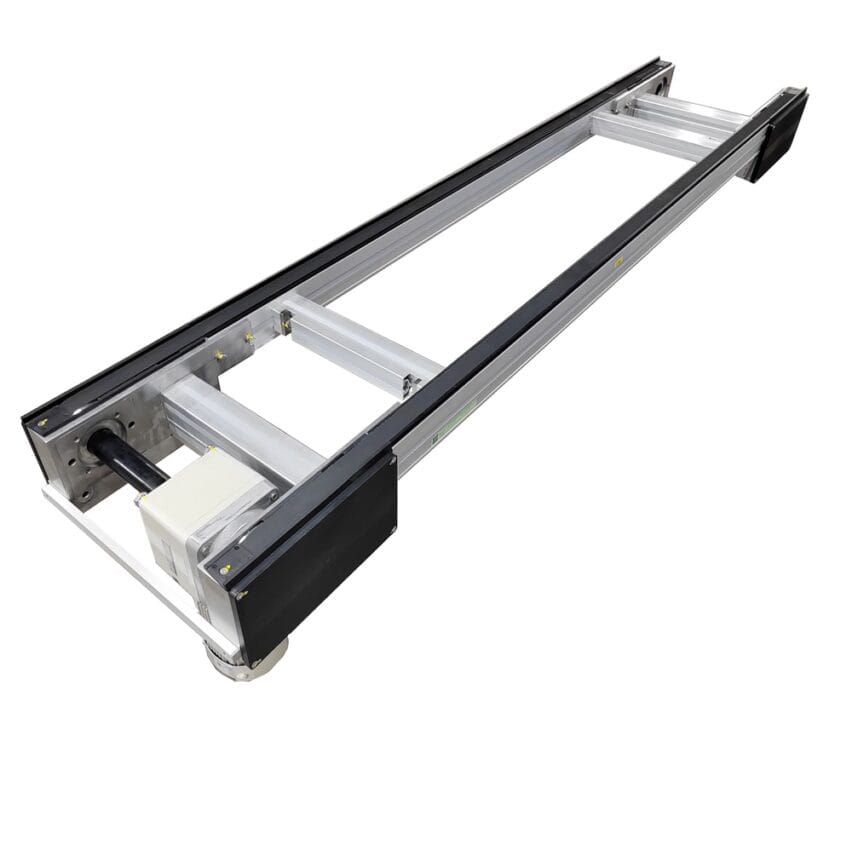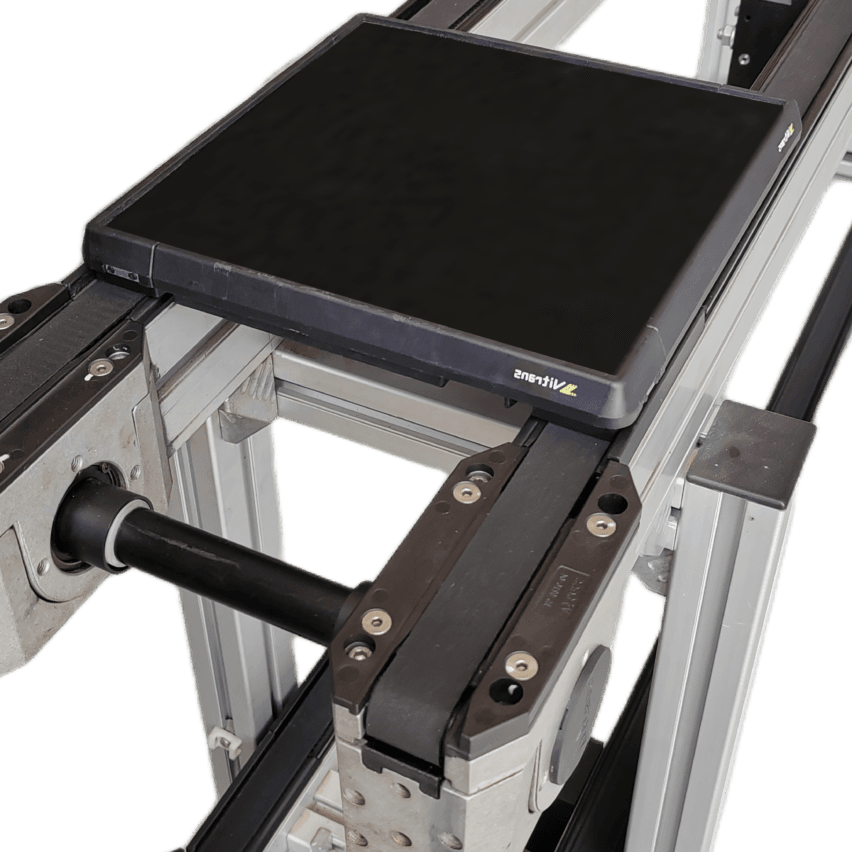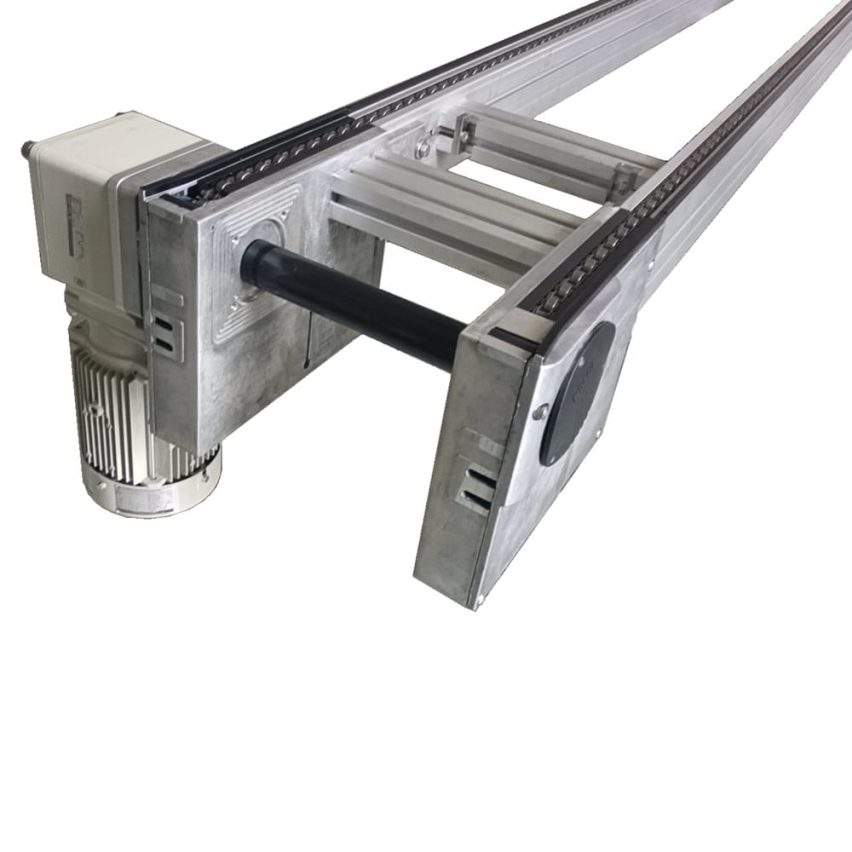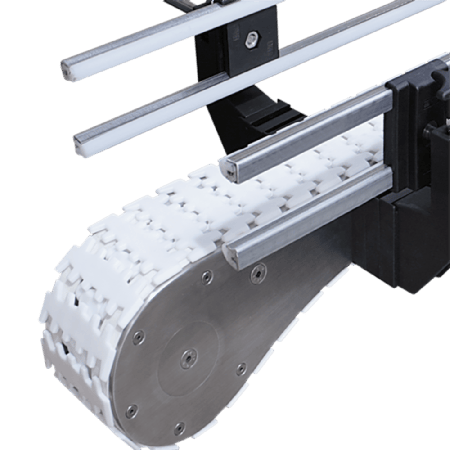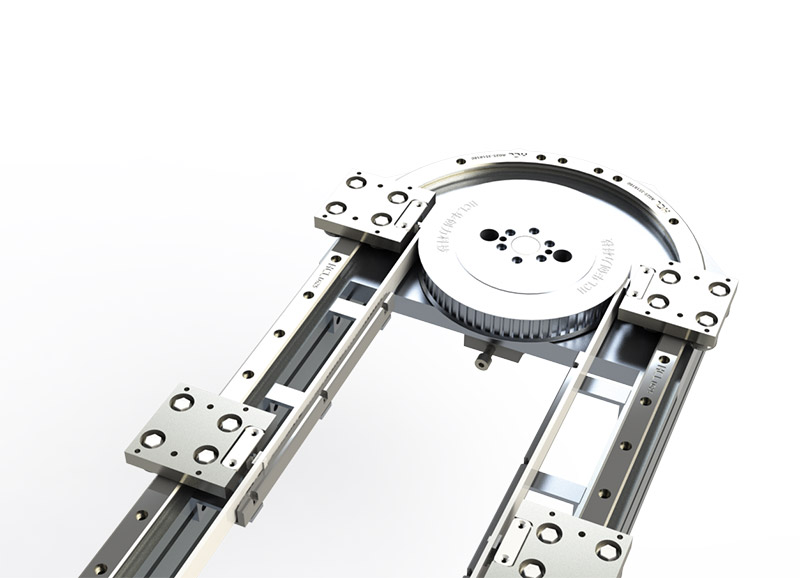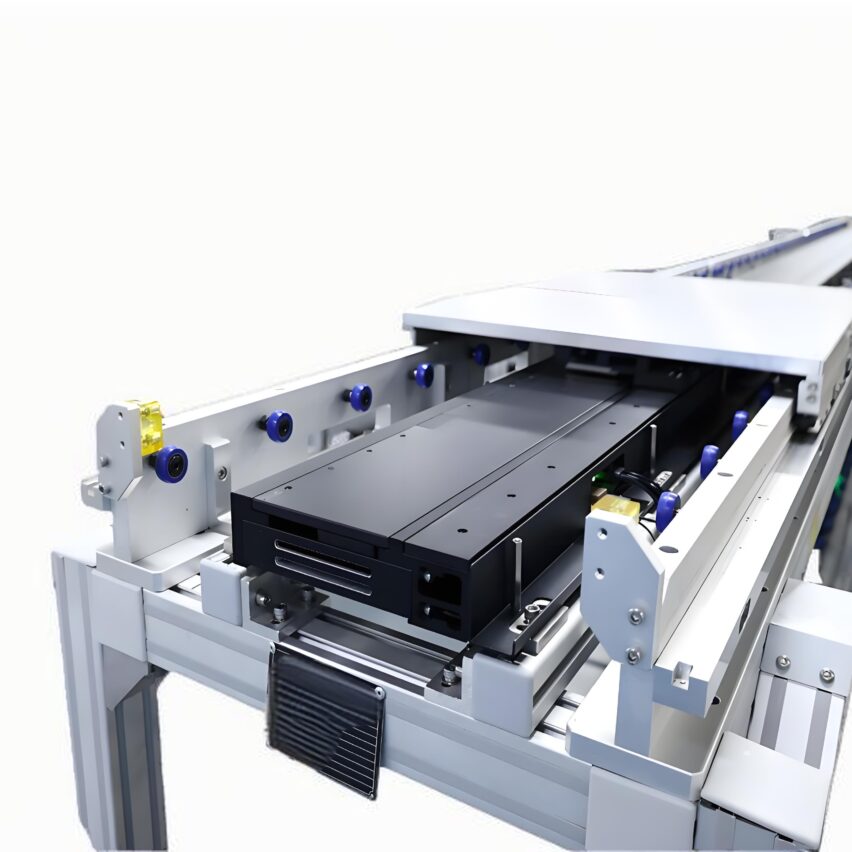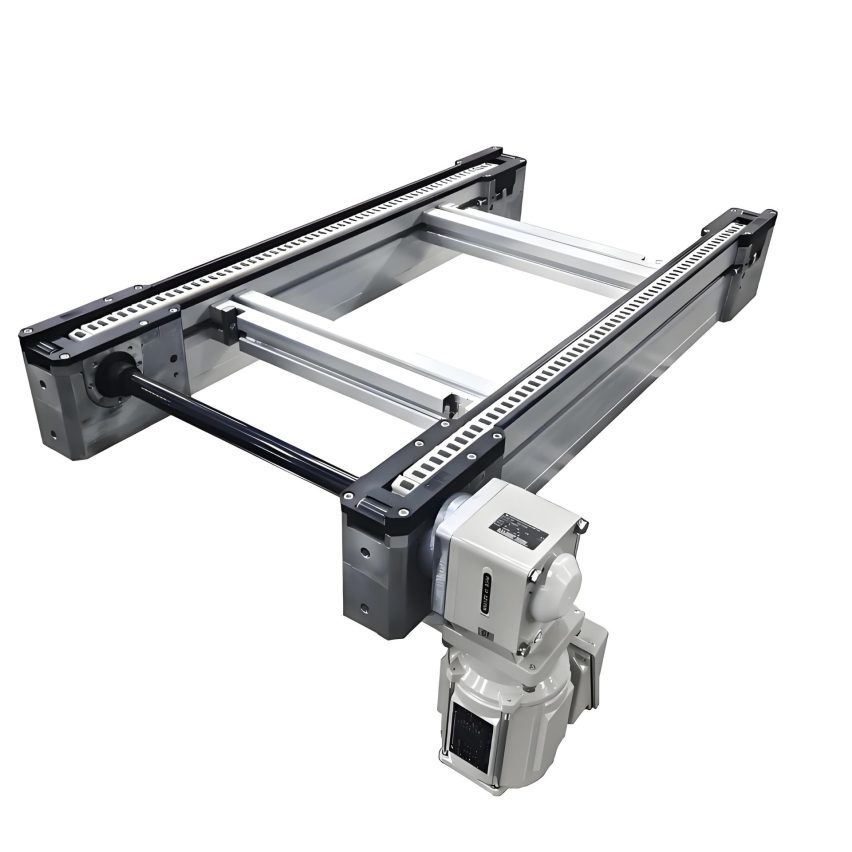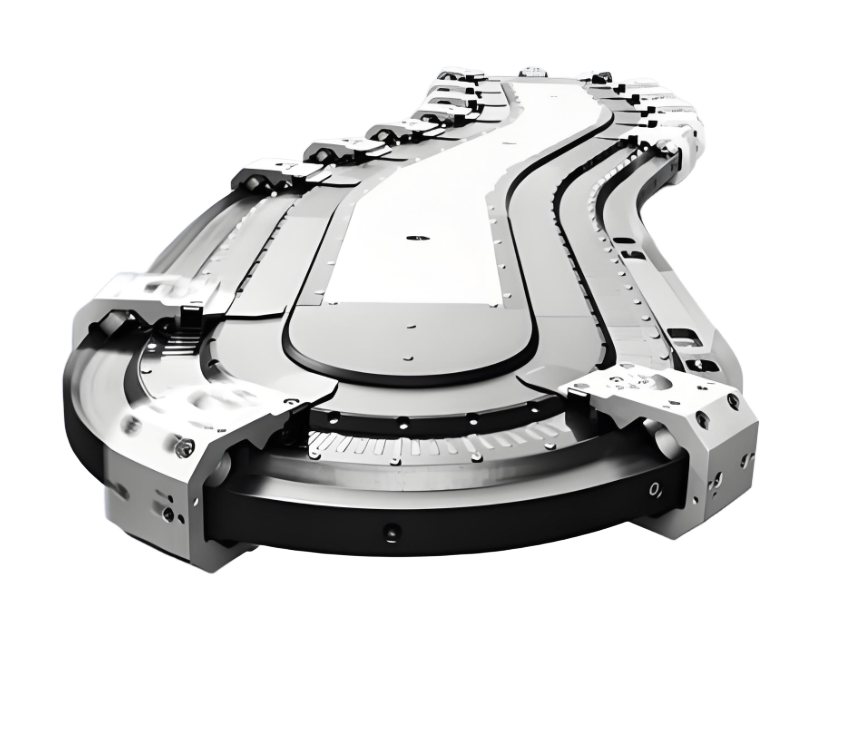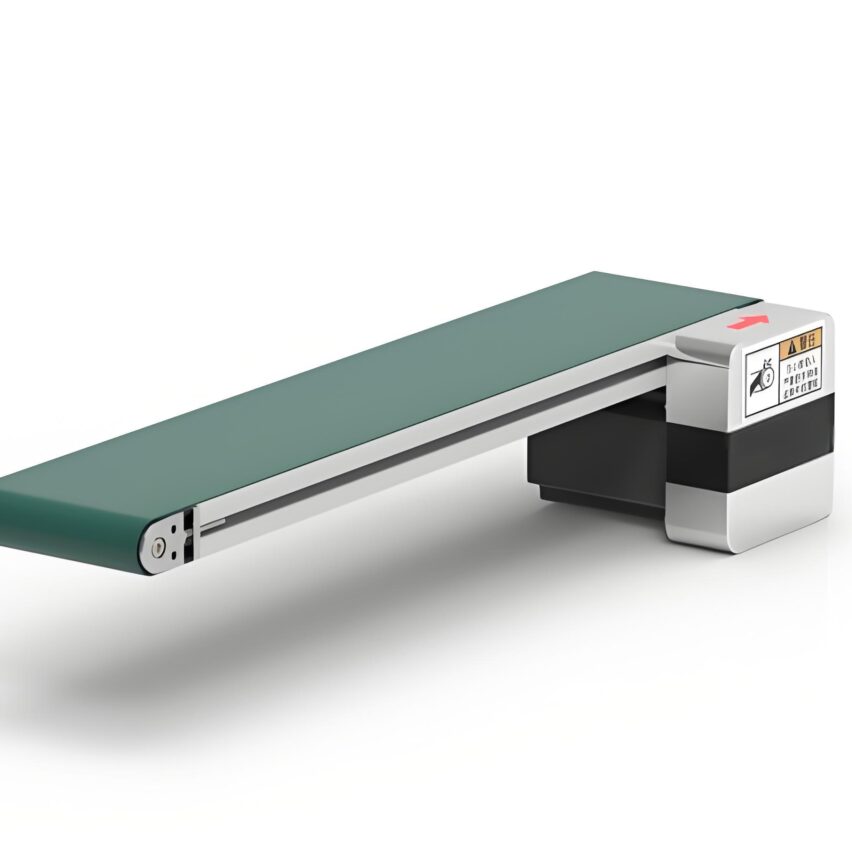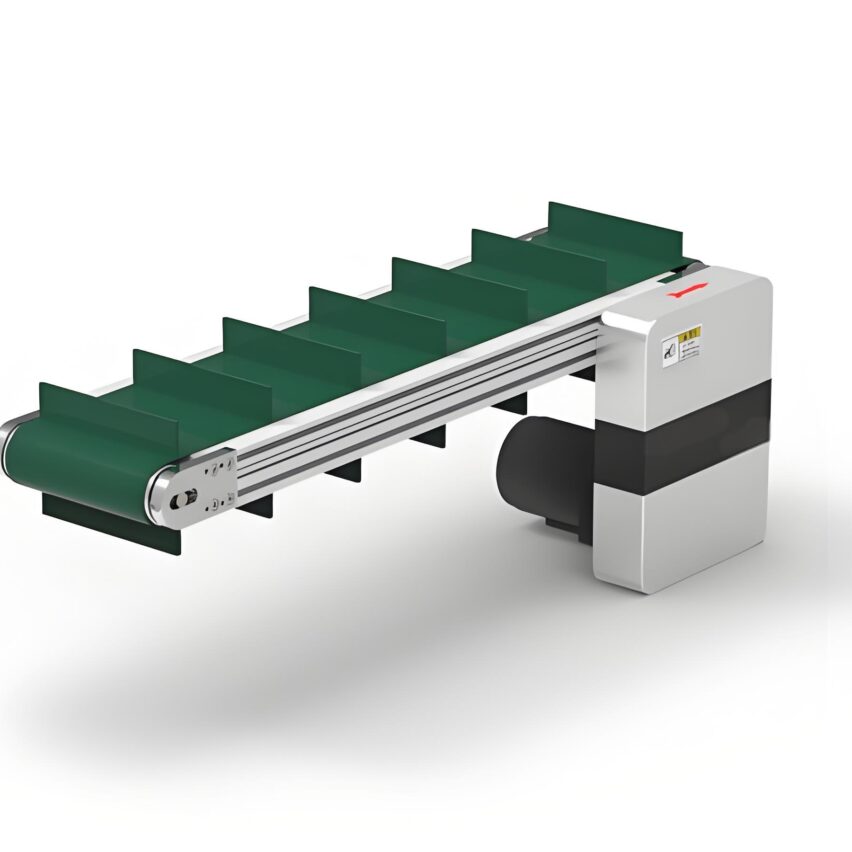I. Space Magic: The Technical Anatomy of a Three-Tier Architecture
The core value of the three-deck belt conveyor line isProductivity Unleashed in the Vertical DimensionThe wire body is made of three-dimensional stacked layers. Compared with the traditional single-layer wire body, its three-dimensional stacked layer design achieves theFootprint reduction of more than 40%At the same time, the loading capacity is increased by 2 times. Take the patent CN217995748U as an example, its frame adopts "eye" C-type steel structure, fixing three layers of conveyor lines from top to bottom:
- upper class: Multi-wedge belt-powered roller line, through theLubrication-free electric roller driveThe noise level is below 65dB and is dedicated to empty container recycling (e.g. automotive factory dashboard tooling board recycling);
- middle-ranking: Mixed layer of powered and unpowered rollers.spaced layoutAllows full-frame goods to stay in sections, facilitating sideways sorting for workers while avoiding the risk of mechanical failure associated with traditional tipping platforms;
- lower strata: Intelligent Variable Belt Layer, viaCylinder linkage PLC controlRealise two-way diversion - forward conveying large parts when the cylinder is retracted and reverse conveying small packages when it is extended, annexing the function of traditional narrow belt line.
In Changzhou, an auto parts factory field research, I saw three layers of the line body of the middle layer of the unpowered roller area stays full of screws in the frame, the workers are using pneumatic wrenches to take directly; and the upper layer of empty frame to 1.5m / s speed back to the starting point of the assembly line. This kind of"Dynamic Cache and Loop Integration"The design allows production line space utilisation to jump from 62% to 89%.
II. Cracking the industry's pain points: from spatial deadlock to flexible mobility
▍传统输送系统的三大死结
- spatial fragmentation: A home appliance company uses three independent conveyor lines to complete the empty box recycling, sorting products conveyor, occupies an area of 120 square metres, while the three-layer line only needs 72 square metres;
- Ineffective human-machine collaborationFood factory workers need to lift the turning platform to enter the sorting position, the average daily bending more than 300 times triggered strain injury, three-layer line in the middle of the unpowered roller area to achieve thestanding straight up.;
- monofunctionality: Mining equipment original configuration belt line + drum line + climbing line, maintenance costs accounted for 18% of revenue, three-layer line through module replacement reduced to 9%.
▍三层架构的破局逻辑
| Traditional programmes | Three-layer line programme | Effectiveness Enhancement |
|---|---|---|
| Independent equipment relay conveyor | Vertically Integrated Multifunction | Energy consumption down 35% |
| Manual transport to and from | tiered synchronous work | Man-hour savings 50% |
| Equipment failure full production stop | Single level fault bypassable | Shutdown risk down 70% |
III. Intelligent evolution: from mechanical cascade to data-driven
1. Generational leap in control systems
- basic version: Relay-controlled cylinder lane change with a response delay of more than 0.5 seconds, resulting in a jamming rate of 8% for small items;
- Smart Edition: PLC + photoelectric sensing, real-time identification of parcel size (such as > 30cm trigger reverse conveyor), sorting accuracy of 99.2%, a courier sorting centre daily processing capacity from 120,000 to 180,000 pieces.
2. The cost dialectic of modular design
- Standardised compromise: Shandong Jetson compressed 35 types of drums into eight standard modules, sacrificing 15% customisation flexibility, but shortening the lead time from 45 days to 15 days;
- Interface Reservation Innovation: The power roller mixing layer retains 20% fine adjustment space (e.g. roller pitch ±50mm adaptive), which can still be used to meet customer-specific sealing requirements in medical aseptic line orders.
3. Energy-consuming black hole cracking experiments
- traditional misconception: To safeguard power stacked with three independent motors, energy consumption soars by 42%;
- Shaft drive optimisation: A factory in Dongguan usesThree levels of central axis linkage(Single motor power 22kW), through the clutch to achieve stratified start-stop, annual electricity cost savings of 170,000 yuan.
Fourth, the cost of reconstruction: how to save 30% of expensive equipment 200% returns
▍投入产出比测算(200米线体案例)
- initial investmentThe average price of a three-layer line is 50,000 RMB/m vs. 12,000 RMB/m for a single-layer line, which is 3.2 times higher than the cost of the equipment;
- implicit benefit::
- Land cost savings: a Shenzhen electronics factory to reduce the footprint of 800 square metres, equivalent to an annual saving of 480,000 yuan in rent;
- Manpower streamlining: Sorters reduced from 12 to 5, saving $450,000 in annual salary;
- Maintenance costs: Points of failure reduced from 26 to 9, annual maintenance costs from 180,000 → 70,000
→ Recovery cycle: 2.3 years (measured data from the auto parts industry)
▍小微企业的轻量化策略
- Core self-research + processing outsourcing: A factory in Guangdong retains only 2 engineers to design the core architecture and commissions local supply chain to process the sheet metal parts, reducing the manpower cost by 40%;
- laddering of cost reductions: 304 stainless steel for load-bearing section (15 years life), carbon steel spray moulding for non-load-bearing section (8 years life), total cost reduced by 28%.
V. Scenario revolution: the cross-border conquest of the three-tier architecture
1. Automotive assembly lines: a balancing act between space and precision
- sore point: The instrument panel (1.8 x 1.2m) is blocking the AGV by occupying the aisle;
- solution (a math problem): Recycling of empty work plates on the upper level (speed 1.5m/s), conveying of full frames on the middle level (±1mm positioning accuracy), transport of screw packs on the lower level (cylinder diversion sorting) - aisle width compressed from 3m to 1.8m.
2. Pharmaceutical sorting centres: dynamic sealing of sterile environments
- traditional dilemma: PVC conveyor belt seams harboured bacteria and scrubbing resulted in 2 hours/day of production downtime;
- Innovative applications: Middle stainless steel mesh belt (304 material) integrated with UV sterilisation module to achieveIn-line sterilisation in operationThe sorting contamination rate of a vaccine company was reduced from 0.031 TP3T to 0.0041 TP3T.
3. The express matrix revolution: a geometric multiplier of sorting efficiency
- single-layer bottleneck: Conventional matrix requires 8 parallel lines to process 40,000 pieces/hour and covers an area of 1,200 m²;
- Three-tier programme: 3 sets of vertical line bodies form 9 layers of sorting surfaces, with an equivalent occupancy capacity of 60,000 pieces/hour, and the subcontracting error rate of a hub centre of China Communications decreased by 60%.
Five questions about the core of a three-deck belt conveyor line
Q1: Are triple-layer structures more prone to failure than traditional double-layer lines?
Stability through modular design::
- Independent drive systems for each layer (e.g. motorised rollers on the upper layer, motorised belts on the lower layer) avoid the spread of single-point failures;
- Patents for quick release interfaces (e.g. CN114056816A) make replacement time from 8 hours → 45 minutes.
Q2: How to solve the problem of inconvenient maintenance of lower floors?
Three-section rail architecture::
- Hydraulic jacking device can lift 1.2 metres in a single layer (maintenance space from 40cm → 160cm);
- The roller bearings are pre-prepared with grease nipple holes for grease filling without dismantling the machine.
Q3: Can the maximum inclination meet the needs of mines?
Dynamic Crawling Technology Breakthrough::
- The middle layer is equipped with magnetic rollers (suction force ≥18N/cm²) to ensure that the ore is conveyed at an incline without slipping;
- Jiangxi Copper case proves capacity maintenance of 300 tph at 35° inclination.
Q4: How to avoid interlayer contamination in food grade applications?
Negative pressure isolation technology::
- Installation of EPP foam partition boards (density 35kg/m³) between floors to prevent debris from falling;
- Layer gap ventilation system (wind speed ≥ 2m/s) to form a vertical air curtain wall.
Q5: Is it suitable for SME procurement?
Rise of the leasing finance model::
- "Pay-per-metre" scheme: Payment of a monthly fee of $1,200 per metre (including maintenance), a reduction of $60% from the purchase cost;
- The model was adopted by 23 micro and small factories in the Pearl River Delta, with an equipment utilisation rate of 911 TP3T.
Exclusive Data Insight: Global Triple Conveyor Lines Market Size to Surpass by 2025$8 billionBut technological differentiation is a foregone conclusion - low-end homogeneous products gross margins are compressed to 12%, while mastering theLane Change Control Algorithm(e.g. dynamic cylinder response <0.1 sec) orinter-layer collaboration protocolThe gross profit of the company can reach more than 35%. In the next three years, it will no longer be the number of stacks that decides the winner, but the"Interlayer flow balancing capability": System performance peaks when the ratio of the upper empty box return speed to the lower finished product output speed stabilises at 1:1.2. This requires companies to move from mechanical design to data modelling, as a German engineer asserted."The essence of the three-tiered line is a three-dimensional traffic scheduling system, and steel is just a vehicle for the algorithms."

